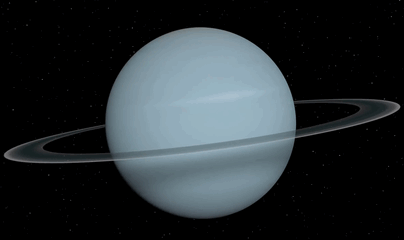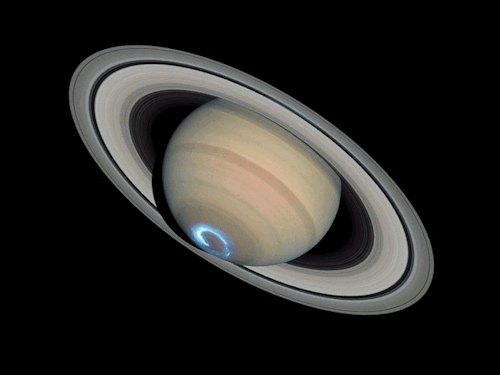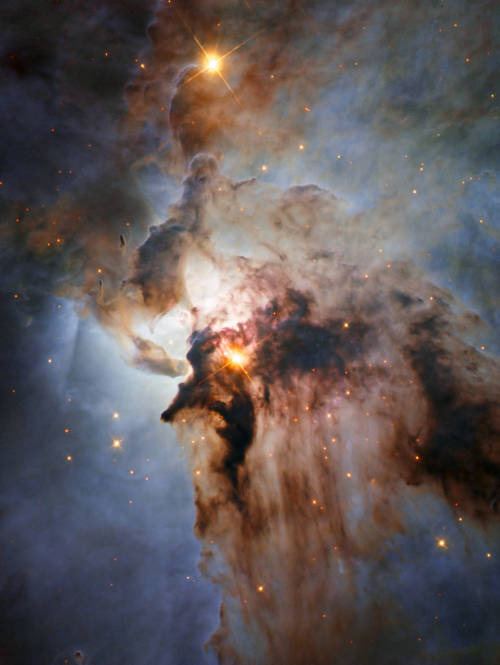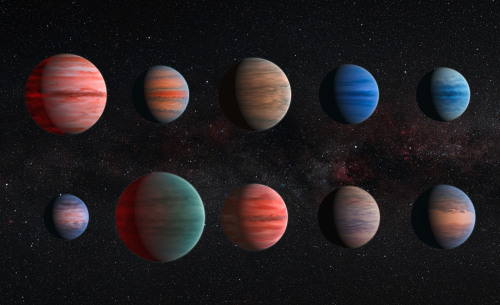Planet Uranus ♅

Planet Uranus ♅
Equatorial Diameter: 51.118 km
Satellites: 27
Notable satellites: Oberon, Titania, Miranda, Ariel & Umbriel
Orbit Distance: 2.870.658.186 km (19 AU)
Orbit Period: 84 Earth years
Surface Temperature: -220°C
Discovered Date: March 13th 1781
Discovered By: William Herschel
Image credit: Oscar Malet
More Posts from Xyhor-astronomy and Others

Sequence of images of auroras seen at the south pole of Saturn. Images combine visible and ultraviolet light.
Credit: NASA, ESA, J. Clarke (Boston University, USA), and Z. Levay (STScI)

Meteor impact craters of the world

Image of Titan taken by the Cassini spacecraft
NASA/JPL-Caltech/SSI/Kevin M. Gill

Remnant of supernova toward the constellation of Vela, which exploded 11,000 years ago.
Image credit: NASA / Chandra x-ray Observatory

Stormy Seas in Sagittarius
This new NASA/ESA Hubble Space Telescope image shows the center of the Lagoon Nebula, an object with a deceptively tranquil name, in the constellation of Sagittarius. The region is filled with intense winds from hot stars, churning funnels of gas, and energetic star formation, all embedded within an intricate haze of gas and pitch-dark dust.
Image Credit: NASA/JPL/ESA/J. Trauger

A slow-motion animation of the Crab Pulsar taken at 800 nm wavelength (near-infrared) using a Lucky Imaging camera from Cambridge University, showing the bright pulse and fainter interpulse.
Credit: Cambridge University Lucky Imaging Group
Low genetic diversity is a problem when you’re founding a new colony, so how would we avoid that on another planet?

This image shows an artist’s impression of the 10 Hot Jupiter Exoplanets studied using the Hubble and Spitzer Space Telescopes. From the upper left to the lower right corner, these planets are WASP-12b, WASP-6b, WASP-31b, WASP-39b, HD 189733b, HAT-P-12b, WASP-17b, WASP-19b, HAT-P-1b And HD 209458b.
Credit: ESA / Hubble & NASA



What are Pulsars?
Pulsars are spherical, compact objects that are about the size of a large city but contain more mass than the sun. Discovered in 1967, pulsars are fascinating members of the cosmic community.
From Earth, pulsars often look like flickering stars. On and off, on and off, they seem to blink with a regular rhythm. But the light from pulsars does not actually flicker or pulse, and these objects are not actually stars.
Pulsars radiate two steady, narrow beams of light in opposite directions. Although the light from the beam is steady, pulsars appear to flicker because they also spin. It’s the same reason a lighthouse appears to blink when seen by a sailor on the ocean: As the pulsar rotates, the beam of light may sweep across the Earth, then swing out of view, then swing back around again. To an astronomer on the ground, the light goes in and out of view, giving the impression that the pulsar is blinking on and off. The reason a pulsar’s light beam spins around like a lighthouse beam is that the pulsar’s beam of light is typically not aligned with the pulsar’s axis of rotation.
Click here to see the animation
Click here to hear the pulsars sound
-
 baddestvenus-in-virgo liked this · 9 months ago
baddestvenus-in-virgo liked this · 9 months ago -
 crossdresserica liked this · 11 months ago
crossdresserica liked this · 11 months ago -
 bardofthebored liked this · 11 months ago
bardofthebored liked this · 11 months ago -
 tcyh-usca reblogged this · 11 months ago
tcyh-usca reblogged this · 11 months ago -
 charlesdclimer reblogged this · 11 months ago
charlesdclimer reblogged this · 11 months ago -
 charlesdclimer liked this · 11 months ago
charlesdclimer liked this · 11 months ago -
 dondeamar liked this · 1 year ago
dondeamar liked this · 1 year ago -
 cores-de-jade liked this · 1 year ago
cores-de-jade liked this · 1 year ago -
 corilol reblogged this · 1 year ago
corilol reblogged this · 1 year ago -
 corilol liked this · 1 year ago
corilol liked this · 1 year ago -
 erikaalvaradoblog liked this · 2 years ago
erikaalvaradoblog liked this · 2 years ago -
 wisent15 reblogged this · 2 years ago
wisent15 reblogged this · 2 years ago -
 kevinmcintyre1090 liked this · 2 years ago
kevinmcintyre1090 liked this · 2 years ago -
 yama-bato liked this · 2 years ago
yama-bato liked this · 2 years ago -
 oculus-de-malus liked this · 3 years ago
oculus-de-malus liked this · 3 years ago -
 lashtal939393 liked this · 3 years ago
lashtal939393 liked this · 3 years ago -
 gigi-orosco reblogged this · 3 years ago
gigi-orosco reblogged this · 3 years ago -
 gigi-orosco liked this · 3 years ago
gigi-orosco liked this · 3 years ago -
 gxyhxrror reblogged this · 3 years ago
gxyhxrror reblogged this · 3 years ago -
 gxyhxrror liked this · 3 years ago
gxyhxrror liked this · 3 years ago -
 redwood63 liked this · 3 years ago
redwood63 liked this · 3 years ago -
 alexmcclure liked this · 3 years ago
alexmcclure liked this · 3 years ago -
 nellydagreat liked this · 4 years ago
nellydagreat liked this · 4 years ago -
 judisthings liked this · 4 years ago
judisthings liked this · 4 years ago -
 marstherian liked this · 4 years ago
marstherian liked this · 4 years ago -
 oxfordsonnets liked this · 4 years ago
oxfordsonnets liked this · 4 years ago -
 dicksandbiscuits liked this · 4 years ago
dicksandbiscuits liked this · 4 years ago -
 zaranihil liked this · 4 years ago
zaranihil liked this · 4 years ago -
 federatio-angelorum reblogged this · 4 years ago
federatio-angelorum reblogged this · 4 years ago -
 1mp reblogged this · 4 years ago
1mp reblogged this · 4 years ago -
 interplanetaryfox reblogged this · 4 years ago
interplanetaryfox reblogged this · 4 years ago -
 teddylsd reblogged this · 4 years ago
teddylsd reblogged this · 4 years ago -
 teddylsd liked this · 4 years ago
teddylsd liked this · 4 years ago -
 curiousauthor reblogged this · 4 years ago
curiousauthor reblogged this · 4 years ago -
 curiousauthor liked this · 4 years ago
curiousauthor liked this · 4 years ago -
 artificialllovers reblogged this · 4 years ago
artificialllovers reblogged this · 4 years ago -
 enjoy003 reblogged this · 4 years ago
enjoy003 reblogged this · 4 years ago -
 enjoy003 liked this · 4 years ago
enjoy003 liked this · 4 years ago -
 ouranien reblogged this · 4 years ago
ouranien reblogged this · 4 years ago -
 darlingheavenisinyoureyes reblogged this · 4 years ago
darlingheavenisinyoureyes reblogged this · 4 years ago -
 darlingheavenisinyoureyes liked this · 4 years ago
darlingheavenisinyoureyes liked this · 4 years ago -
 joyvcut liked this · 4 years ago
joyvcut liked this · 4 years ago
For more content, Click Here and experience this XYHor in its entirety!Space...the Final Frontier. Let's boldly go where few have gone before with XYHor: Space: Astronomy & Spacefaring: the collection of the latest finds and science behind exploring our solar system, how we'll get there and what we need to be prepared for!
128 posts